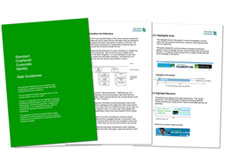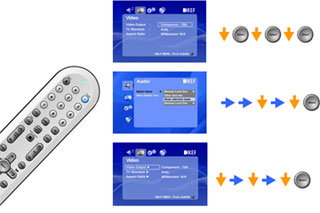User Interface Design
User Interface Design is not so much about how an interface looks as how it is experienced.
Interaction design is the process of designing how people interact with a product or an application’s functionality and content so that it is easy to understand, easy to use and efficient. This includes the layout of the interface, the instructions, and the flow between different steps of an action.
Our Work: Multiple Product Categories
We have worked on the interaction of everything from mobile phones and Web sites to home entertainment systems and ATM machines. We have also written a number of design guidelines that help companies ensure future developments are consistent and integrate seamlessly with existing products and interfaces.




More Than Aesthetics
Although we design elegant interfaces, good interaction design is not only about aesthetics. The most important work is what we do before the visual design is finalized. Every detail of an interaction is thought out carefully, from the arrangement of all functions of a system down to the placement and label of a single button.
Solid Foundations
Making design decisions is not as easy as it looks. But we have the experience and expertise to help us make the right ones. We make full use of years of experience in design and research and a solid expertise in:
- Human-computer Interaction
- Human Factors
- Cognitive Ergonomics
- Physical Ergonomics
Physical and Cognitive Ergonomics
When designing products, we evaluate different interaction models to select the one with fewer hand movements, fewer button presses and more intuitive flow.

Our Design Process
The process we use to build successful products and user interfaces is based on an understanding of the business, the customers and a solid expertise in design, usability and human-computer interaction. It combines the science of research, and the creativity to know what to do with the results.

Options Adapted to Your Needs
We understand some companies may not have time or may not need to go through all stages. Although we recommend going through a full user-centered design process, we can lend you our expertise at any one or any combination of stages.
Understanding User Needs
At Customer input, we are expert at researching target users of a product in order to understand their needs, attitudes and behaviors. The success of our solutions is largely based on a solid understanding of what people really want. We use multiple research methods including:
- Observational research (our main research method)
- In-depth interviews
- Focus groups
- Exploratory psychology exercises
- Advanced surveys
Read more about our research expertise >
Information Architecture
Information architecture involves the organization, labeling and navigation of information on systems to help users find information efficiently and intuitively.
Mental Models
A Mental Model is the mental image people have of how things work. In a User Interface, this may be the different steps to accomplish various tasks. We use different research techniques to understand target users’ mental models in order to design action flows that are more intuitive.
Prototyping
We produce prototypes of the user interface. Depending on the project, these can be highly detailed interactive prototypes of the entire user interface, or “wireframe” prototypes without aesthetic detail meant only to illustrate the position of interface elements and flows between actions. These can then be tested rapidly with target users and refined before making a final build.
Usability Testing
Whether as part of the design process of a user interface or as a separate service, we conduct usability testing of the interface. Usability testing involves observing target users as they attempt to accomplish tasks on a prototype or a final version of a user interface.
Design Guidelines
We produce detailed Design Guidelines that can be used designers and developers when building the first version of the interface or adding new functionality. These guidelines ensure a consistency of look and feel throughout the interface when new functionality is added. Our Design Guidelines provide the rationale behind the design and include design process recommendations, usability principles and describe in detail the look and behavior of various interaction elements.
